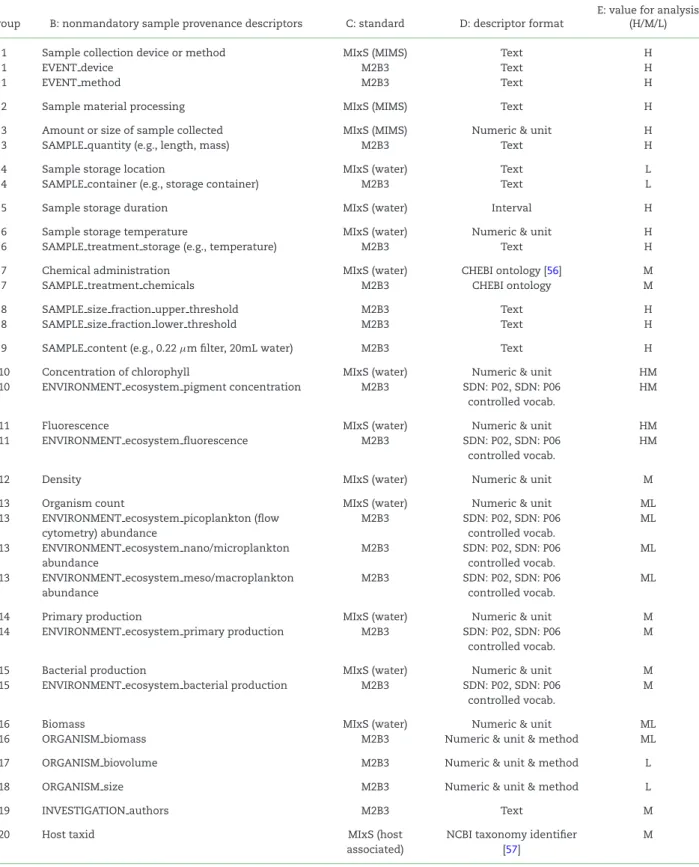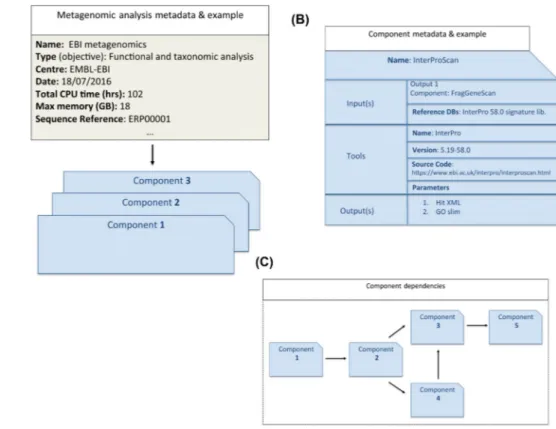The metagenomic data life-cycle: standards and best practices
Texte intégral
Figure




Documents relatifs
This paper looks at performance outcomes in the two most recent PISA cycles – 2012, when mathematics was a major assessment domain, and 2015, when mathematics was a minor domain,
ICES, International Council for the Exploration of the Sea; IEEE, Institute of Electrical and Electronics Engineers; IMOS, Integrated Marine Observing System (Australia);
I have been arguing that we must keep in mind the distinction between ordinary facts and underlying reality, when we evaluate the ethical implications of metaphysical theses. We
gondii infection in wild animals in temperate areas, and assesses the risk of inter-transmission between domestic and wild cycles with its consequences in terms of zoonotic
In this case the proposed approach allows us to perform some coordinate transformation from normal phase space to some virtual one and in such a way simplify Lyapunov function..
The bootstrap is a computer-based method proposed by Efron et al, 1993 to simulate the sample distribution around a meaningful statistic value (e.g., mean, median,
Between 80-90% of the developers who responded to question on the type of geochemical data collected, managed or maintained within their company collect all the data types listed
In order to regulate photosynthesis versus rapid light fluctuations, phytoplankton has evolved a number of physiological photoprotective mechanisms such as the

